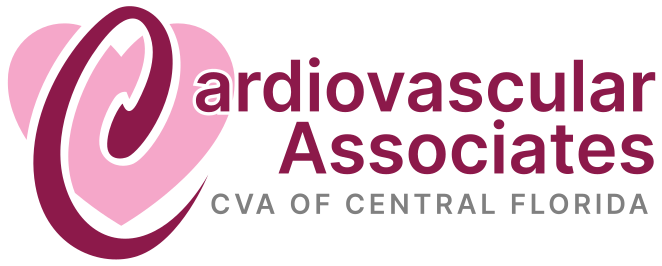Deep Vein Thrombosis (DVT)
What is What is Deep Vein Thrombosis (DVT)?
Deep vein thrombosis (DVT) is a blood clot in a vein that lies below the skin. DVTs are most likely to form in the leg veins, but they can also develop in the upper arm or upper chest veins at times.
DVTs are more likely to occur after prolonged periods of inactivity–such as after a long car or plane ride, or when someone spends more time than usual in bed–in people with cancer, during pregnancy, or in people with inherited genes that increase the likelihood of blood clot formation.
Risks & Benefits of DVT Treatment
When it comes to managing deep vein thrombosis (DVT), the benefits of treatment significantly outweigh the potential risks. DVT is a serious condition that involves the formation of blood clots within the deep veins, usually in the legs. Treatment of DVT typically consists of the use of a blood thinning (anticoagulant) medication which helps to dissolve the clot over time and prevent new clots from forming. At times, more invasive treatments, including infusions of more potent blood thinners, are needed to break up clots that are extremely large.
The primary goal of treatment is to prevent these clots from causing life-threatening complications while minimizing any possible adverse effects. Treating DVT can also help improve blood flow and minimize long-term damage. Importantly, while most DVTs do require treatment with blood thinners, select cases do not require blood thinners.
Benefits of Deep Vein Thrombosis DVT Treatment
- Preventing Pulmonary Embolism
One of the most critical benefits of DVT treatment is the prevention of pulmonary embolism. A pulmonary embolism occurs when a blood clot breaks loose from the deep vein and travels to the lungs, blocking an artery. This can be a life-threatening condition. Treatment with anticoagulant medications helps to dissolve existing clots and prevent new ones from forming, reducing the risk of pulmonary embolism. - Preserving Blood Flow
DVT can hinder blood circulation in the affected limb, leading to pain, swelling, and discomfort. Treatment enhances blood flow by preventing clot growth and aiding in the natural breakdown of clots. This promotes improved limb function and alleviates symptoms. - Minimizing Long-Term Complications
If left untreated, DVT can result in complications such as post-thrombotic syndrome, a condition characterized by chronic pain, swelling, and skin changes in the affected leg. By promptly addressing DVT, the risk of such long-term complications is significantly reduced. - Enhancing Quality of Life
Effective DVT treatment improves the overall quality of life for individuals affected by the condition. Relief from pain, swelling, and mobility restrictions allows patients to regain their normal activities and routines.
Risks of Deep Vein Thrombosis Treatment
- Bleeding
Anticoagulant medications can increase the risk of bleeding. This risk is low, but it is important to be aware of it and to report any unusual bleeding or new fatigue to your doctor. - Thrombocytopenia
Certain anticoagulant medications can rarely cause a decrease in the number of platelets in the blood. This can lead to a condition called thrombocytopenia, which can increase the risk of bleeding. - Allergic Reaction
Anticoagulant medications can sometimes cause an allergic reaction. This is a rare but serious risk. If you experience any signs of an allergic reaction, such as hives, difficulty breathing, or swelling of the face or tongue, you should seek immediate medical attention.
What to Expect Before, During, and After DVT Treatment
Managing deep vein thrombosis (DVT) involves a comprehensive process designed to effectively address the condition and promote recovery. This journey begins with a thorough medical evaluation, encompassing your medical history, physical examination, and precise diagnostic tests such as ultrasound or venography to pinpoint the clot's location. Based on this assessment, your personalized treatment plan will be developed, including tailored anticoagulant medication regimens, guidelines on potential side effects, and adjustments to your daily routine to accommodate your treatment.
The first step is to diagnose DVT. This is done with a physical exam and diagnostic tests, such as an ultrasound or venography. The goal of treatment is to prevent the clot from getting bigger and to reduce the risk of a pulmonary embolism. Treatment usually involves anticoagulant medications, which help to break down the clot. When the clot has dissolved, you will need to focus on recovery. This may involve lifestyle changes, such as quitting smoking, maintaining a healthy weight, and staying physically active. You may also need to wear compression stockings to help improve blood flow. Here are a few other things to note:
- You are at an increased risk of getting DVT again once you’ve had it previously.
- You must take steps to prevent DVT from recurring, such as taking anticoagulant medications long-term and avoiding risk factors, such as sitting for long periods of time.
- You must quit smoking as it can increase your risk of blood clots.
Am I a Candidate for Deep Vein Thrombosis Treatment?
If you have been diagnosed with deep vein thrombosis (DVT) and have not received treatment or been evaluated for causes of your DVT, you should be evaluated by an expert in DVTs and their treatment. If you are experiencing symptoms such as leg swelling, pain, warmth, or redness and have one or more risk factors for DVT, including cancer or a family history of blood clots, you should be evaluated by a medical professional. Eligibility for DVT treatment is determined by your healthcare provider after a thorough assessment, as select cases do not require anticoagulant treatment
Your vascular specialist will consider a number of factors to determine if you are a candidate for DVT treatment. These factors include:
Diagnosis: A confirmed diagnosis of DVT through imaging tests like ultrasound or venography.
Severity: The extent and location of the clot determine the appropriate treatment approach.
Health Status: Your overall health and medical history are assessed to ensure treatment safety.
Risk Factors: Conditions such as cancer, previous DVT episodes, or genetic clotting disorders increase your risk and may influence treatment decisions
Symptoms: The most common symptoms of DVT are pain, swelling, redness, warmth, and increased prominence of the superficial veins in the affected limb. If you experience symptoms like shortness of breath, chest pain, or coughing up blood, indicating a potential pulmonary embolism, urgent treatment may be necessary.
Medical History: Prior surgeries, medications, and ongoing health conditions are considered to tailor treatment to your needs.
Lifestyle Factors: Smoking, obesity, and physical inactivity can impact treatment success and are evaluated.
Don't Ignore Signs of DVT - Seek Vascular Care Now
If you notice unexplained leg swelling, pain, warmth, or discoloration, it could signal a dangerous blood clot. Deep vein thrombosis (DVT) requires urgent diagnosis and treatment to reduce the risk of serious complications. Our vascular specialists provide comprehensive DVT care - from advanced imaging to identification of clots to innovative therapies that dissolve clots and restore blood flow. Request an appointment today.
Photo Gallery
Video Gallery
Testimonials
Photo Gallery
Get to Know Our Cardiologists
Meet our renowned cardiologists who are committed to providing you with the best possible care from the initial consultation to post-operative support. Our cardiovascular specialists will guide you through every step of your medical journey with compassion and expertise.
In Search of Care? Request a Consultation Today



